iSpindel 25° Calibration in Pure Water
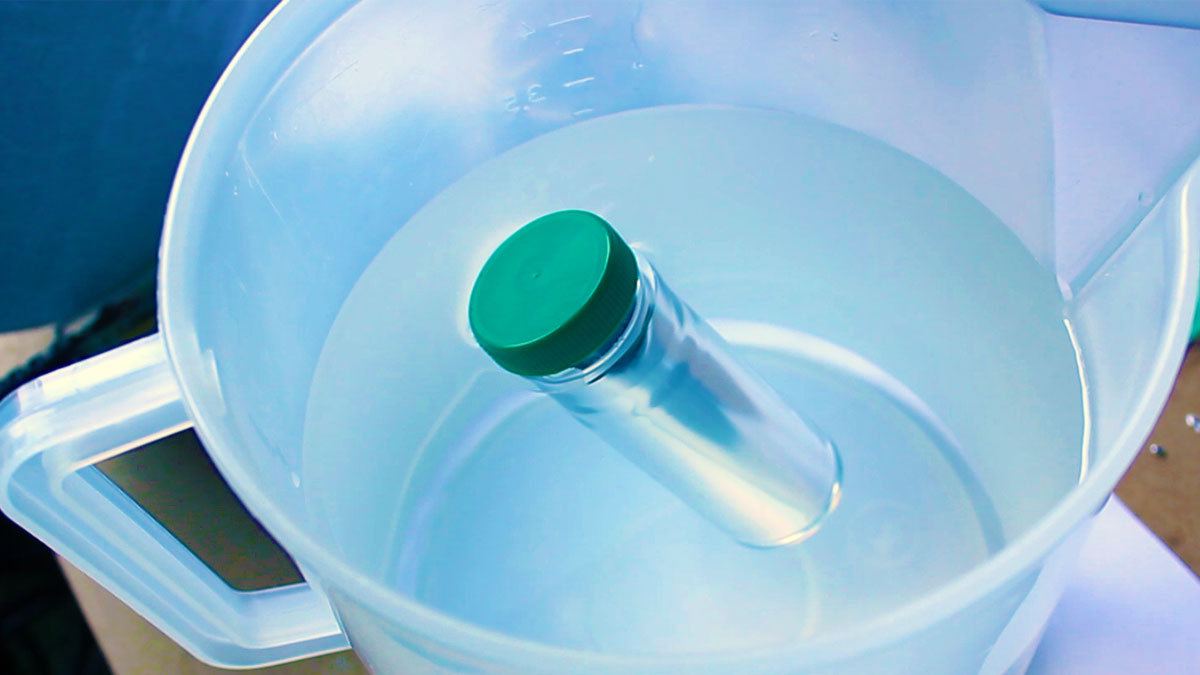
Who says we need to do this?
I’m not exactly sure the exact inner workings of the iSpindel code that make this necessary, but universam1 who runs the iSpindel GitHub page says it’s not an option, it’s a requirement. I’ve included a few quotes from him below as well as an excerpt from the official iSpindel FAQ page.
Do I have to tare the iSpindle with weights?
It is indispensable to enable the iSpindle functionality! Add weights such as nuts, lead balls etc. to the bottom until the inclination is 25° from the vertical. See also example pictures in the documentation. Normally about 20g are sufficient. +/- 5° deviations are often still acceptable.
iSpindel FAQ Page
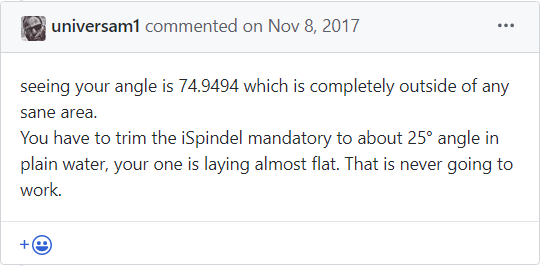
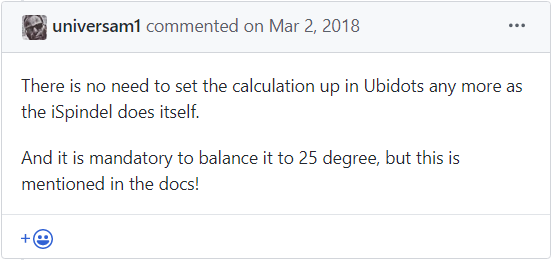
Why do we need to do this in the first place? Can’t you just design the iSpindel to float correctly without adjustments?
I think the main reason is that this is needed is that everyone is buying individual components from different manufacturers around the world. As consumers, we don’t have the ability to check the exact weights of products before we buy them. For example, 18650 batteries vary in capacity and weight from manufacturer to manufacturer. Since the functionality of electric components isn’t dependent on their weight, we need some sort of mechanism for changing the angle after iSpindel assembly is completed to adjust for differences in the manufacturing process for the “same” components.
How the Jeffrey PCB handles angle adjustments in pure water.
The Jeffrey has two mechanisms for adjusting to 25° in pure water. By using one or both of these methods you will be able to get to 25° in pure water.
- The battery and battery holder are movable and can be installed in multiple positions due to the surface mounted battery holder and the over-sized solder pads on the PCB. I’ve included a ruler on the PCB to better quantify battery position. The battery is the heaviest part of the iSpindel and being able to move it has a drastic impact on how the iSpindel floats and allows for an increase adjustment of about 50° angle from the lowest battery position.
- A place to add weights. The Jeffrey has a perforated area to afix weights at the bottom of the PCB. Weights can be glued, sewn with needle and thread, double-sided taped, pull tied, the possibilities are as vast as your imagination. When I added about 2.9 grams of weight it decreased angle by about 14°.
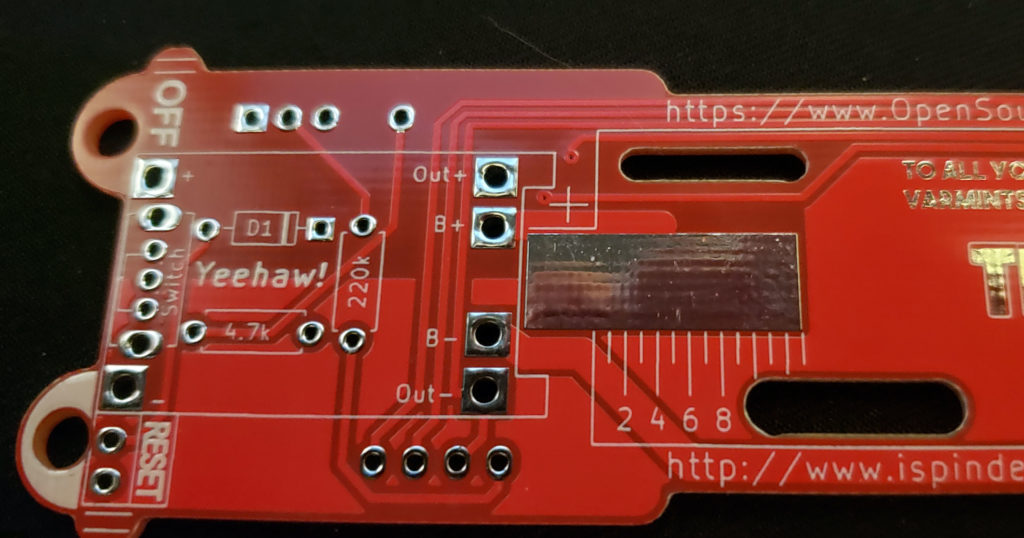
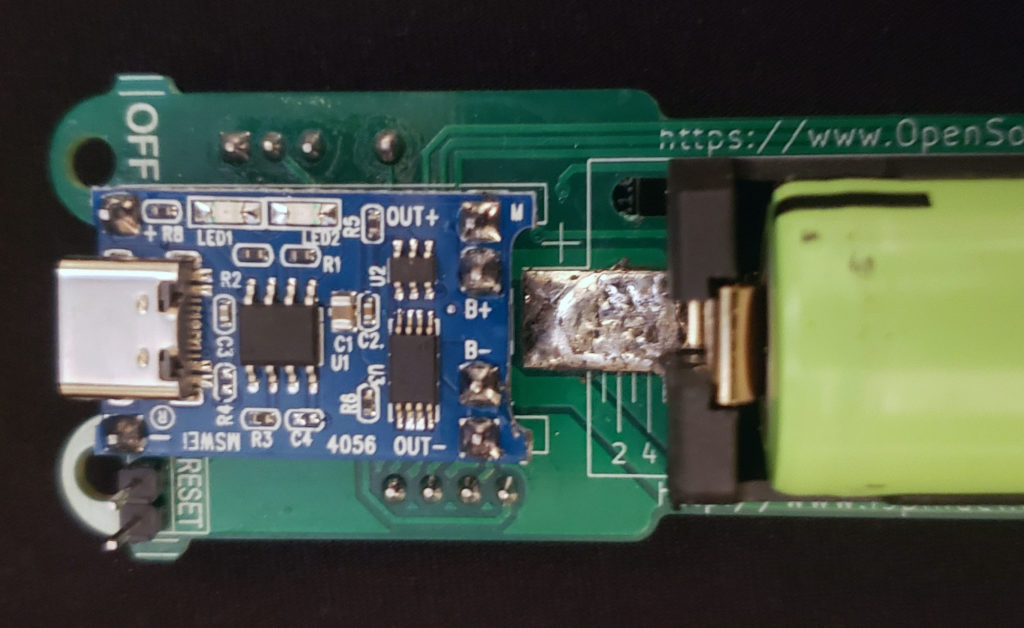
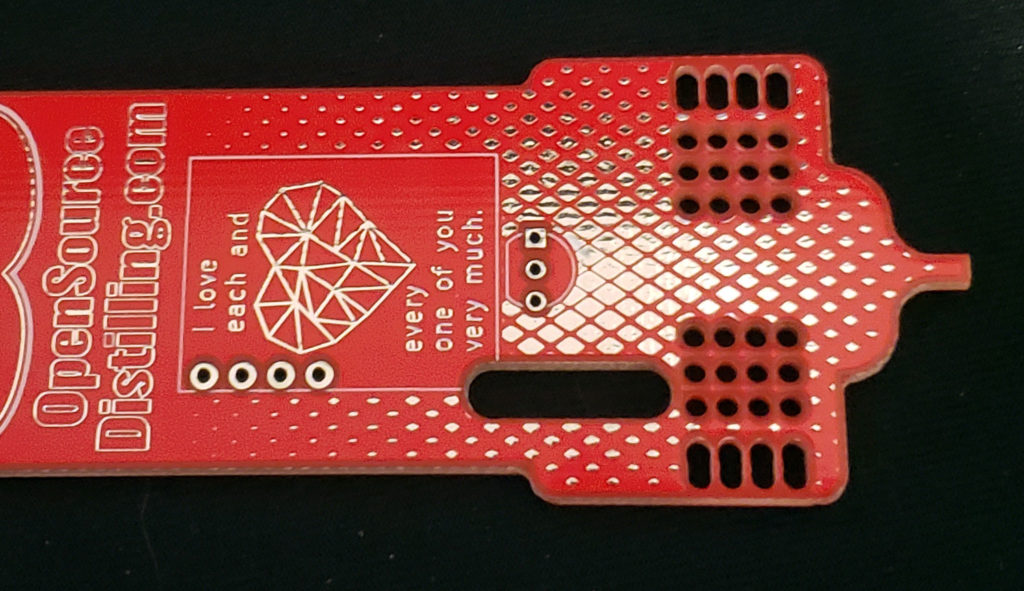
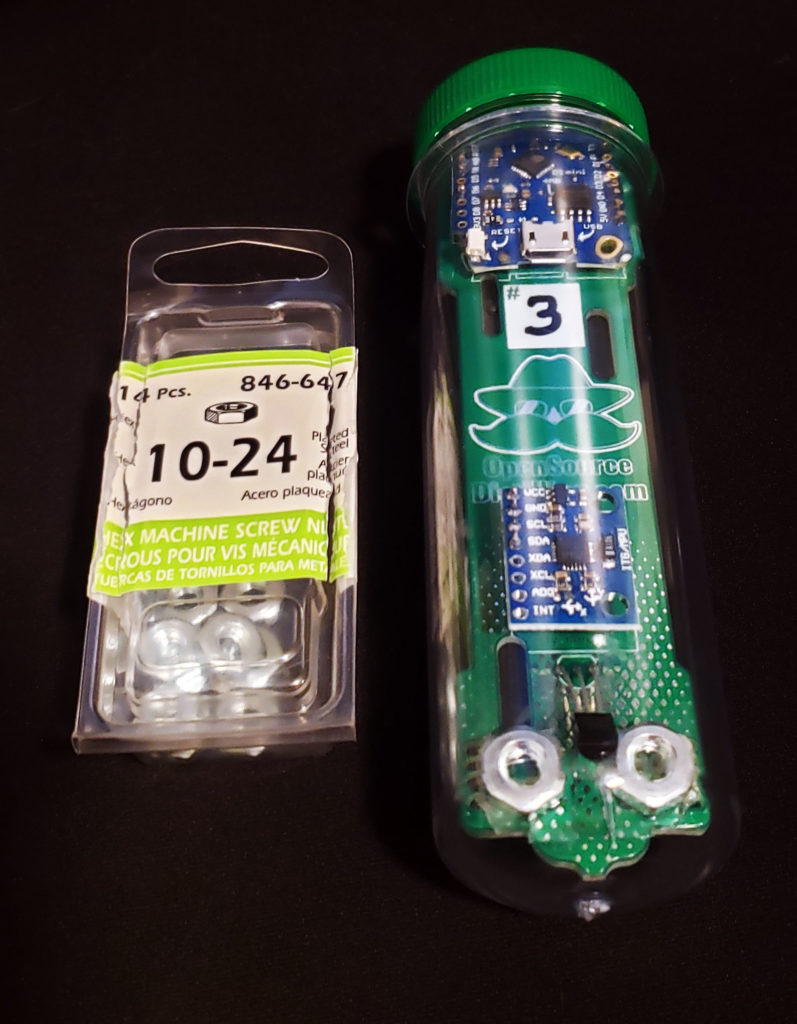
Adjusting the angle.
I will be balancing two different styles of iSpindels. I have The Jeffrey which was designed by yours truly. I also have some of the first iSpindels I made from the very popular PCB 4.0 by CherryPhilip. The iSpindel FAQ states that getting within +/- 5° of 25° is often acceptable when in pure water (somewhere between 20° to 30°). I will consider +/- 2° the sweet spot (somewhere between 23° to 27°).
My method.
I do an offset calibration on a perfectly level surface then measure the angle in water. If I add weights or move the battery, I once again do an offset calibration then measure the angle in water. I’m currently getting the angle value directly from the iSpindel Info page that is accessible from the iSpindel when it is in configuration mode.

The Jeffrey
The Jeffrey – iSpindel #1
- 24.17° – No weight, battery at 10 mm position.
- 75.43° – No weight, battery at 0 mm position.
- 26.30° – Moved battery back to 10 mm position. Note: Not sure why the angle was different from the original angle but it is still within the +/- 2° so I will leave it. Maybe it is due to additional solder on the PCB.
The Jeffrey – iSpindel #2
- 23.73° – No weight, battery at 10 mm position.
The Jeffrey -iSpindel #3
- 28.63° – No weight, battery at 10 mm position.
- 14.85° – After adding two nuts (2.9 grams) as weights with double-sided Gorilla tape
- 42.22° – 2.9 grams of weight, battery at 0 mm position (testing highest possible battery position with weights).
- 19.93° – 2.9 grams of weight, battery at 7 mm position.
- 22.23° – 2.9 grams of weight, battery at 6 mm position.
- 23.95° – 2.9 grams of weight, battery at 5 mm position.
The Jeffrey – iSpindel #4
- 26.78° – No weight, battery at 10 mm position.
The Jeffrey – iSpindel #5
- 25.04° – No weight, battery at 10 mm position.
PCB 4.0 by CherryPhilip
Please note that my PCB 4.0 boards were installed with the wrong battery holder. I ordered surface mounted battery holders instead of the PCB mounted ones, so I bent the surface mounts to solder them into place. Possibly as a result, I also had to file the PCB down to get it to fit in the petling. This could have something to do with the angle being too low on my 4.0 PCB builds but I’m not sure. I did email back and forth with CherryPhilip but we were not able to figure out why the angle was too low. The battery I have is the correct weight. Others have reached out to me and I have seen other posts online who have the same issue as me. I have also messaged with people that don’t have this issue with the 4.0 PCB and their iSpindels float totally fine without any modifications. Why some people have this issue while others do not is still a mystery to me.
On the forum HomebrewTalk.com user Wild7s posted pictures of how he added lead weights in tape to the top of his PCB 4.0 to get his to balance. If you are aware of other methods please ensure you let me know about them so they can be shared here with others.
PCB 4.0 – iSpindel #2
- 16.42°- Baseline with no changes.
- 17.45°- After putting foam in the bottom of the petling and filing the top of the PCB down.
- 20.43°- After putting foam in the bottom of the petling and filing the top of the PCB down as far as I could without damaging the USB port. Had to melt plastic switch with soldering iron to shorten it.
PCB 4.0 – iSpindel #4
- 15.85° – Baseline with no changes.
- 18.50°- After putting foam in the bottom of the petling and filing the top of the PCB down.
- 20.48°- After putting foam in the bottom of the petling and filing the top of the PCB down as far as I could without damaging the USB port. Had to melt plastic switch with soldering iron to shorten it.
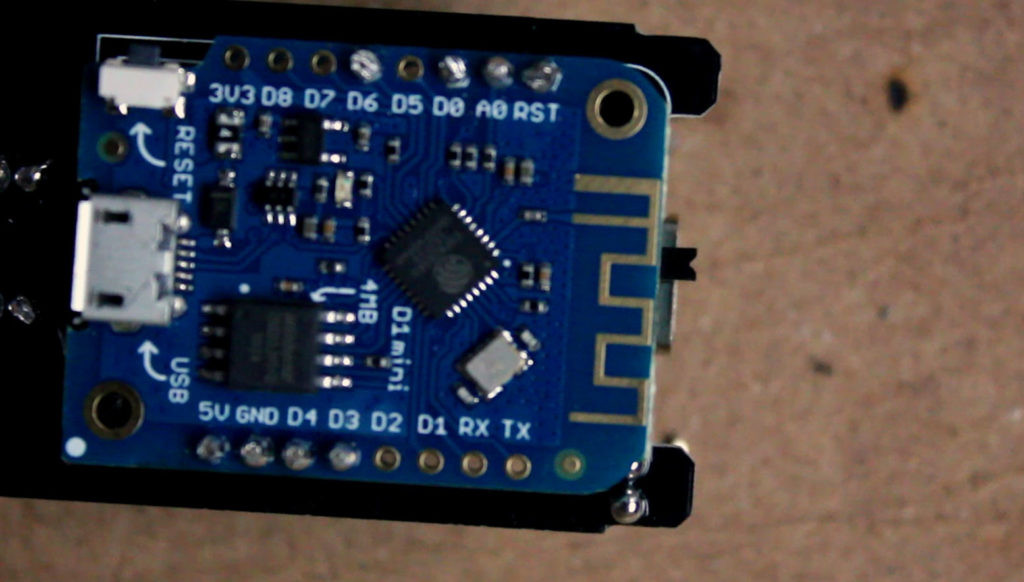
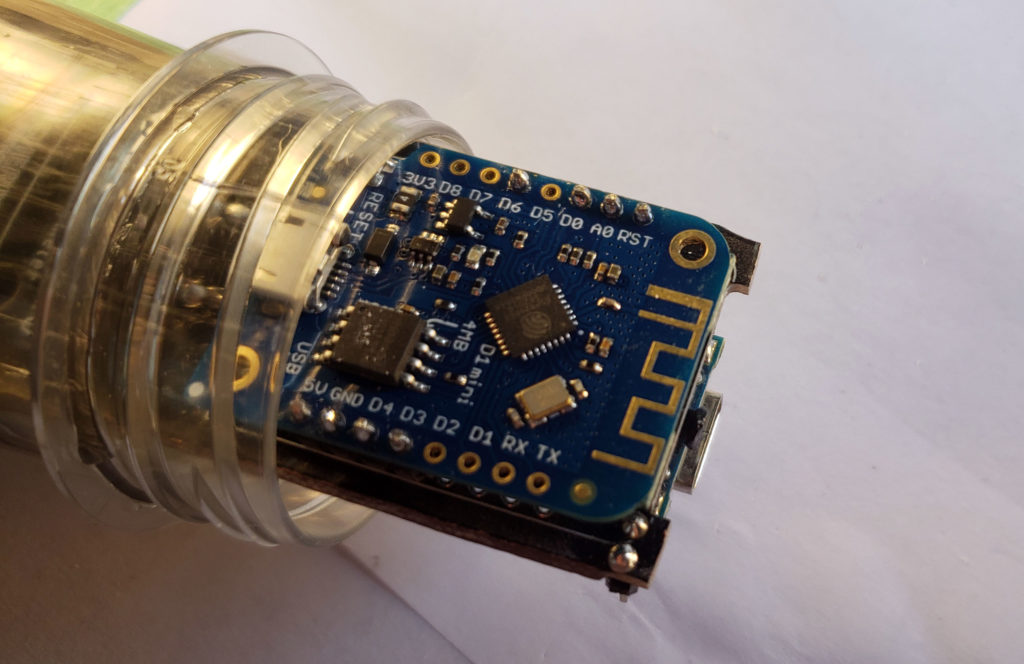
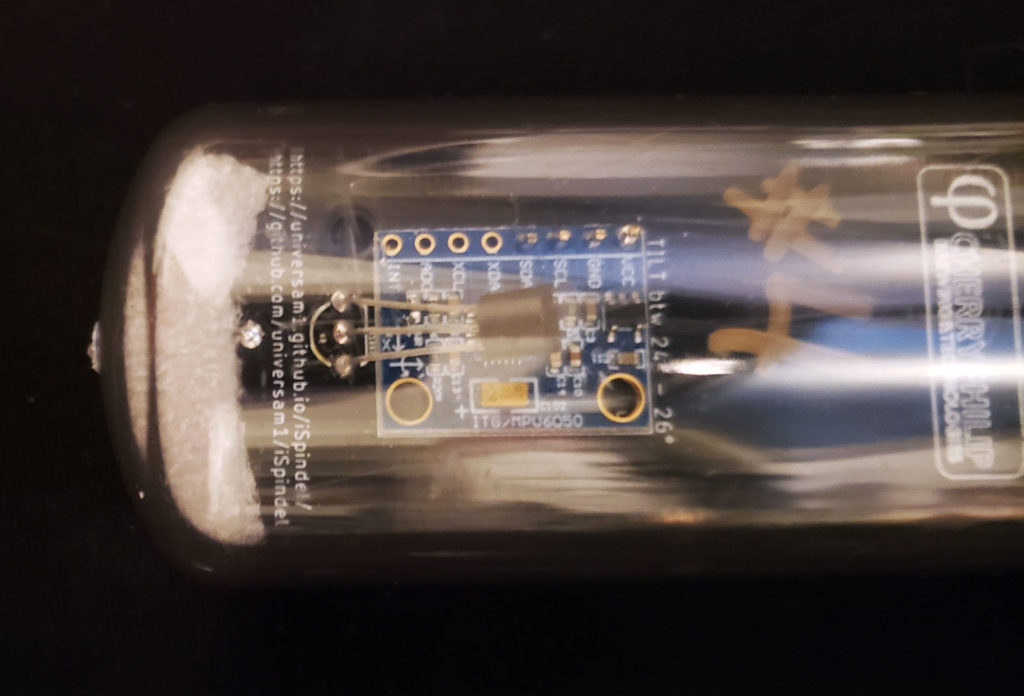
Conclusion
Were we able to get all seven iSpindels to within +/- 5 degrees. We were able to get all of The Jeffreys to +/- 2 degrees which is fantastic! We saw how adding weights to The Jeffrey can decrease the angle in pure water and how moving the battery up can increase the angle in pure water. Once balanced to 25 degrees in pure water we can move onto fermentation or sugar water calibration that ties in the readings from the iSpindel to a classic hydrometer, once this is complete the iSpindel is ready for service.
Happy Fermenting!
Sincerely,
Joey Joe Joe Jr.



21 Comments
Undefined Brewing - Chris · May 22, 2020 at 12:07 PM
Wow great information! Thanks for all your hard work!
Joey Joe Joe Jr · May 22, 2020 at 12:09 PM
My pleasure thanks for watching!
Neal Hannath · June 13, 2020 at 5:48 PM
Hi Joey.
I think I have everything set the same as you but mine is coming in at nearly horizontal. Same parts. Only thing that seems wrong to me on mine (3 of them) is that the cap of the petlings seems heavy., It’s all i can think is balancing the battery etc.
Any thoughts ?
Neal
Joey Joe Joe Jr · June 15, 2020 at 4:23 PM
Are you using a different tube/petling? I would move the battery to the lowest possible position which is the 10mm mark on The Jeffrey PCB. If the angle is still too high I would add weights to dial it in.
Neal · June 15, 2020 at 4:27 PM
Joey. I persevered last night and did manage to get 2 in 25 degree but had to use 4-5 weights to achieve this. The pelting looked the same but you never know.
Thanks for your help with this project.
Neal
Joey Joe Joe Jr · June 15, 2020 at 4:58 PM
Nice!
Alexandre · June 27, 2020 at 3:31 PM
Hello,
I could calibrate my Ispindel to pure water at 25 degrees. Should I perform the formula calibration or just the 25 degrees in pure water is enough to start using it?
Thank you!
Joey Joe Joe Jr · June 28, 2020 at 9:48 AM
You still need to do the formula calibration. Each iSpindel is different and it’s a required step. Thanks for watching!
Neil · July 1, 2020 at 8:37 AM
I’ve just built 5 and all of them float at about 75 degrees. I’ve got the battery in the lowest possible position but maybe it’s the design of the battery holders I bought but I can’t get them any lower than about 8mm (that’s looking at the top edge of the plastic on the battery holder). It’s not a problem just posting for information. I think I might disassemble one of the battery holders and try to trim some off the bottom solder tab so I can sit it even lower on the PCB.
Joey Joe Joe Jr · July 12, 2020 at 9:26 PM
What kind of battery holders did you use? Send me a link. Did you get them from my shopping list?
Ned · July 11, 2020 at 4:34 AM
Your board is great and makes assembly and tuning very easy. Thanks a lot for your design and your video.
When calibrated at 25 degrees, my iSpindel floats with some of the cap under water. Is this correct? I was thinking ideally the iSpindel would float with the cap above the waterline.
Also, I was watching the video very carefully to find out which way round the battery holder and battery went. Eventually I found the +/- on the PCB and the +/- inside the battery holder. Had to look hard for them! The + (with the indent ring) of the battery and holder are on the D1-mini side (that little bastard!) with – down to the end of the board.
Thanks again Joey – Ned
Joey Joe Joe Jr · July 12, 2020 at 9:29 PM
Everything is so small on electronics. Glad you figured out the battery holder.
For the cap floating underwater, my caps float partially underwater. The only concern is that wifi signals and water don’t mix. Different iSpindels weigh differently so each iSpindel will float a little differently depending on a variety of factors, like how much your battery weights. If you have a good wifi connection you are good to go.
Martin Tauson · September 9, 2020 at 6:39 AM
Maybe a not so smart question, got my ispindel built on the Jeffrey to float great at 25 degrees. Ran the automatic offset calibration. do I need to do the sugar water calibration aswell or am I good to go?
Joey Joe Joe Jr · September 9, 2020 at 9:02 AM
Hey Martin, once you get the iSpindel offset calibrated and floating at 25 degrees you’ll need to do a final calibration sugar or an actual fermentation calibration. The last calibration will output a formula for each individual iSpindel that will tie a regular hydrometer’s readings to the degrees of the iSpindel. That video hasn’t come out yet but it will be. Check out my main iSpindel page towards the bottom for links to the calibration method and a Ubidots video.
Mark · December 2, 2020 at 9:30 AM
Amazing project. Thanks for all the resources.
I wanted to ask about the “pure water”. Did you use DI, RO, distilled or maybe just tap water for this calibration. I assume it wouldn’t make much difference.
Joey Joe Joe Jr · January 5, 2021 at 10:46 PM
Yes, pure water = tap water. I agree that other purified water(s) will not make a significant difference. Thanks for watching!
Steve Upton · January 2, 2021 at 12:37 PM
I built one of these from a kit a year or so ago and it’s been sat on a shelf. Having just decided to calibrate it, I can get it to calibrate at 89.9 degrees on the bench, but then no matte how much I tilt it in the air I can’t get the reading below 60 degrees! Should I assume the gyro is busted?
Thanks for your thoughts.
Joey Joe Joe Jr · January 5, 2021 at 11:05 PM
If you log into the access point and hold it vertically in your fingers do you get anywhere close to 0 degrees? It should be at 89-ish level on the table (horizontal), 0-ish degrees up/down letting it dangle between two fingers (verticle).
Steve · January 5, 2021 at 11:34 PM
On the horizontal it calibrates to 89ish no problem, but trying all possible angles holding it in the air I don’t seem to get below 60 degrees, ever.
Joey Joe Joe Jr · January 7, 2021 at 10:49 AM
Well, that’s not right. You have done an offset calibration?
iSpindel Kalibrering | Christian Gruffman · January 8, 2024 at 4:41 AM
[…] Referens: http://opensourcedistilling.com/ispindel-25-degree-calibration-in-pure-water/ […]